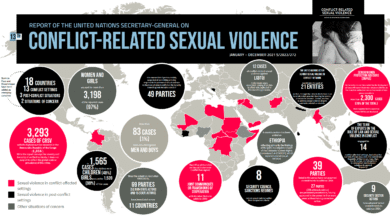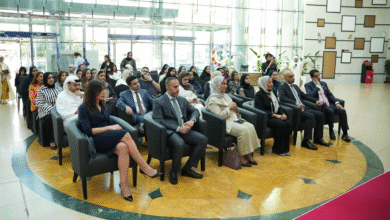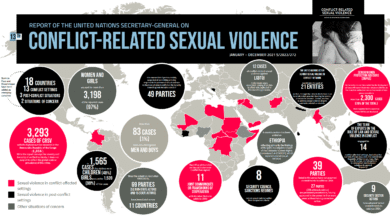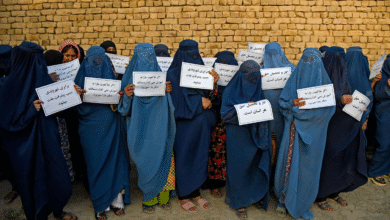Women’s Organizations in Crisis: Funding Cuts Threaten Lifelines
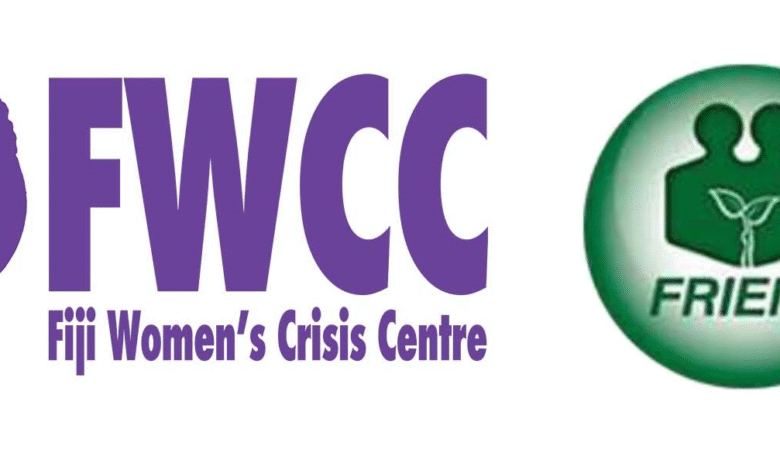
Women’s organizations in crisis are at a critical juncture, grappling with severe funding cuts that jeopardize their existence and the vital services they provide. According to a sobering report released by UN Women, nearly half of these organizations operating in crisis zones could face closure within a mere six months, severely affecting millions of women and girls relying on humanitarian aid for crucial support. With 90% of women-led groups reporting funding shortfalls, many have already been forced to suspend programs, particularly those aiding survivors of gender-based violence. The alarming rise in preventable health and violence issues among women underscores the urgent need for sustained investment in women’s rights organizations. Without immediate and effective solutions, such as reinstating UN Women funding, the life-saving services these organizations provide may vanish, leaving vulnerable populations without essential support in their time of need.
In times of tumult, women’s advocacy groups face unprecedented challenges, especially those positioned in crisis-stricken regions. The ongoing humanitarian crisis has highlighted a troubling trend of decreasing financial resources for vital organizations dedicated to women’s welfare and rights. These grassroots movements not only provide critical support to women and children but also symbolize resilience and empowerment amidst adversity. As gender-specific issues such as violence and health disparities escalate, the focus on nurturing these entities becomes ever more pressing. The call for renewed commitments to fund these essential organizations is not just about social justice; it is also about ensuring sustainable recovery and support for the most vulnerable populations.
The Impact of Funding Cuts on Women’s Organizations in Crisis Zones
Funding cuts to women’s organizations in crisis zones create a dire situation that threatens the very fabric of humanitarian aid for women. As reported by UN Women, nearly 90% of women-led organizations in these regions have faced a reduction in financial resources, leading to the suspension of critical programs. These suspensions stifle support systems essential for survivors of gender-based violence, exacerbating an already alarming epidemic of violence against women and girls in conflict-affected areas. The closure of these organizations could result in a significant increase in preventable health issues and crimes, emphasizing the need for immediate action to secure sustainable funding.
Moreover, these funding cuts disproportionately impact vulnerable populations, highlighting a critical humanitarian failure. With organizations serving 308 million people in crisis across 73 countries, the loss of services could lead to devastating consequences, including increased pregnancy-related deaths and malnutrition. As these organizations act as vital safety nets for women and girls, their potential closure presents a humanitarian crisis that requires swift intervention to ensure they continue to operate and provide necessary support.
Strengthening Local Women’s Leadership in Humanitarian Efforts
Local women’s leadership is increasingly recognized as essential to effective humanitarian responses. Organizations led by women are not just service providers; they are advocates, community leaders, and resilience builders. In crisis situations, these women play a pivotal role in understanding the unique needs of their communities, often yielding better outcomes than top-down approaches. UN Women emphasizes the necessity of prioritizing and resourcing women-led initiatives, especially given the alarming reports of funding cuts that threaten their existence. Supporting these groups fosters not only gender equality but ensures that humanitarian aid effectively addresses the specific challenges women and girls face in crisis settings.
Furthermore, empowering local women leaders enriches the humanitarian sector with diverse perspectives that can lead to more holistic solutions. By embedding women’s rights organizations at the center of decision-making processes, the humanitarian framework can become more adaptive and resilient. The call for flexible, long-term funding options is not merely a financial necessity; it is a strategic imperative to equip these organizations to withstand external pressures and continue their critical work in crisis zones. As stated by officials, supporting local women’s initiatives is not only about equity but serves as a strategic defense against a deteriorating humanitarian landscape.
The Role of UN Women in Supporting Women’s Rights Organizations
UN Women plays a crucial role in advocating for women’s rights organizations globally, especially in environments facing conflicts or natural disasters. The challenges these organizations face, intensified by funding cuts, make their advocacy work even more vital. UN Women’s reports illustrate the need for immediate and sustainable investment in these organizations, which are often the first responders to crises affecting women and girls. With an uptick in violence against women during crises, these organizations are essential for providing shelter, legal aid, and psychological support to survivors, significantly reducing the risk of gender-based violence.
To operationalize these needs, UN Women proposes a systemic change in how humanitarian funding is distributed. This entails ensuring that resources are directed toward flexible, multi-year funding specifically tailored for women’s organizations in crisis situations. By supporting these grassroots movements, UN Women not only upholds women’s rights but reinforces the entire humanitarian system. The importance of these organizations cannot be overstated, as they are lifelines for many women and girls in distress, making their survival in a funding-strapped environment fundamental to the success of humanitarian efforts.
Addressing Gender-Based Violence in Crisis Situations
Gender-based violence (GBV) is an escalating crisis in many conflict-affected regions, necessitating urgent action from humanitarian organizations. Women and girls often face heightened risks of sexual violence and exploitation, particularly in unstable environments where traditional social structures disintegrate. As highlighted by the recent findings, funding cuts have led to program suspensions that are crucial for combating GBV. Organizations that provide safe shelters, medical support, and legal assistance are struggling to maintain their operations, leaving survivors without essential services during critical times.
In response to the growing incidence of GBV, there is an imperative need for coordinated efforts to bolster the support mechanisms for women. Humanitarian organizations must prioritize their funding strategies to ensure that services aimed at preventing and responding to gender-based violence are sustained and expanded. Investing in programs that empower women and provide education on rights can help mitigate risks and enhance community resilience. The support for women’s rights organizations that specialize in GBV is vital, as it enables them to continue their essential work in protecting the most vulnerable in crisis situations.
The Need for Sustainable Humanitarian Aid for Women
Sustainable humanitarian aid for women in crisis zones is critical in ensuring their rights and well-being are upheld. The current landscape, marked by funding cuts and resource allocations that overlook women’s organizations, is unsustainable and poses severe risks for the future. As stated in reports from UN Women, if these organizations are forced to close, the ramifications will ripple across communities, exacerbating issues of health, safety, and equality for women and girls. Therefore, there is an urgent need to rethink funding mechanisms and commit to long-term solutions that support women’s humanitarian efforts.
Furthermore, the reliance on short-term aid disrupts the operational capacity of women-led organizations, which often lack the necessary infrastructure to respond effectively to sudden funding changes. A call to integrate gender considerations into broader humanitarian strategies is essential for creating an equitable response framework. Establishing sustainable funding models that prioritize women’s organizations can help build their capacity, ensuring that they not only survive but thrive as they meet the needs of their communities.
Prioritizing Gender Equality in Humanitarian Funding
In light of the current crises and the subsequent funding cuts affecting women’s organizations, prioritizing gender equality in humanitarian funding emerges as a fundamental priority. Without intentional allocation of resources toward women’s rights organizations, the disparities that hinder gender equality in humanitarian responses will only widen. UN Women’s emphasis on flexible, long-term funding models highlights the urgent need for donors to reevaluate their strategies and commit to gender-sensitive funding practices. The interdependence between gender equality and effective humanitarian action must be recognized to ensure comprehensive responses to crises.
Moreover, investing in gender equality is not merely a moral obligation, but also a pragmatic approach to building resilience within affected communities. Research shows that when women are actively involved in humanitarian efforts, the outcomes are more positive and sustainable. Therefore, by prioritizing funding for women’s organizations, stakeholders can enhance their efficiency in delivering aid and addressing community needs. Ensuring that funding policies reflect gender priorities is crucial for fostering an inclusive approach to humanitarian action that ultimately leads to the empowerment of women and a reduction in inequality.
Challenges Faced by Women’s Rights Organizations
Women’s rights organizations in crisis zones confront numerous challenges exacerbated by funding cuts and systemic barriers. Many of these organizations already operate on tight budgets, making them highly vulnerable to financial shocks. The recent report from UN Women outlines the staggering reality that over half of these organizations are at risk of closure, highlighting a fundamental flaw in how humanitarian aid is allocated. The ongoing cuts directly impact their ability to provide vital support, increase their operational workload, and limit their outreach to communities, thus deepening the crisis that women and girls face.
Additionally, the lack of consistent support for these organizations leads to a loss of trust within communities they serve. When funding is unpredictable, it can result in discontinuity of services, discouraging women from seeking help due to uncertainty about program availability. This cycle creates a feedback loop that continues to harm the most vulnerable. To address these challenges, it is essential for both national and international donors to recognize the vital role women’s rights organizations play and to support them accordingly through sustained funding and resources.
Implementing Effective Solutions in Crisis Management
Implementing effective solutions in crisis management requires focusing on women’s organizations as pivotal players in this arena. The capacity of these organizations to respond quickly and efficiently to the needs of women and girls in crisis situations is proven and must be leveraged by integrating their expertise into wider humanitarian strategies. Solutions must encompass not only financial support but also collaborative frameworks that empower these organizations to maintain autonomy and effectively address their communities’ unique challenges.
Incorporating women’s voices into the planning and execution of humanitarian responses ensures that aid strategies are informed and sensitive to the realities of those affected. This participatory approach fosters innovation and resilience within communities, as women-led organizations often devise tailored responses that can bridge immediate gaps in service provision. Therefore, establishing reliable mechanisms for multi-year funding and reinforcing partnerships with these organizations is crucial to building a sustainable and inclusive humanitarian response.
Future Outlook for Women’s Organizations in Crisis Management
The future outlook for women’s organizations in crisis management hinges on a critical assessment of current funding structures and the nature of humanitarian response. If there is a shift towards prioritizing and adequately resourcing women’s organizations, it can catalyze transformative changes that empower women and improve community resilience. The ongoing dialogue around these issues encourages stakeholders to recognize the profound impact that supporting women-led initiatives can have on crisis relief efforts. However, continued advocacy is necessary to ensure that women’s voices remain central in discussions about funding and operational strategies.
As humanitarian crises continue to grow, the need for strong, sustainable support systems for women’s organizations becomes increasingly urgent. By supporting women’s rights organizations, we help foster environments where women can thrive, ultimately benefiting entire communities. The collective commitment to these organizations will determine the future landscape of humanitarian aid, dictate resilience in the face of adversity, and uphold the fundamental principles of gender equality. The trajectory ahead necessitates bold action and unwavering support for women at the frontlines of humanitarian crises.
Frequently Asked Questions
What are the impacts of funding cuts on women’s organizations in crisis zones?
Funding cuts severely impact women’s organizations in crisis zones, forcing nearly half of them to risk closure within six months. According to UN Women, 90% of women’s rights organizations have already experienced funding reductions, with 51% suspending critical programs that support survivors of gender-based violence. These cuts undermine essential services and increase vulnerabilities facing women and girls in humanitarian crises.
How does UN Women support organizations addressing gender-based violence in crisis situations?
UN Women plays a crucial role in supporting organizations that address gender-based violence in crisis settings by advocating for increased funding and providing resources to humanitarian aid for women. They call for prioritized, flexible, and multi-year funding to empower local women-led organizations, essential for sustaining their life-saving programs amidst growing crises.
Why are women’s rights organizations vital in humanitarian crises?
Women’s rights organizations are vital in humanitarian crises as they provide essential services and support for women and girls, addressing issues such as preventable pregnancy-related deaths and malnutrition. They act as lifelines, offering resources and advocacy for those affected by gender-based violence, and are critical for rebuilding communities in settings where traditional structures have failed.
What solutions does UN Women propose to address funding issues for women’s organizations in crisis?
UN Women recommends prioritizing direct, flexible, and multi-year funding for local women’s rights organizations at the forefront of humanitarian response. They emphasize the importance of local women’s leadership and participation in decision-making processes as part of a humanitarian reset, ensuring that essential services for women and girls are maintained.
How can individuals contribute to humanitarian aid for women in crisis areas?
Individuals can contribute to humanitarian aid for women in crisis areas by donating to reputable women’s organizations focused on providing support and services. Advocating for increased funding and awareness of the challenges faced by these groups is also crucial. Additionally, supporting local women-led initiatives can help empower communities and promote gender equality.
What roles do women’s organizations play in preventing gender-based violence?
Women’s organizations play critical roles in preventing gender-based violence by providing direct support services to survivors, raising awareness about the issue, advocating for legal reforms, and ensuring that women’s voices are included in policymaking. In crisis settings, these organizations often become safe havens for women and girls, addressing their specific needs and rights.
What challenges do women’s organizations face in obtaining funding amidst crises?
Women’s organizations face significant challenges in obtaining funding due to systemic issues such as reduced humanitarian budgets and competition for limited resources. The recent funding cuts exacerbate these challenges, threatening their ability to provide vital support services, particularly in crisis zones where the need is most urgent.
| Key Points | Details |
|---|---|
| Funding Crisis | 47% of women’s organizations in crisis zones may close within six months due to funding cuts. |
| Impact on Services | 90% of surveyed women-led organizations experienced funding cuts; 51% suspended programmes, particularly those aiding survivors of gender-based violence. |
| Humanitarian Need | 308 million people in 73 countries now rely on humanitarian aid, with increasing numbers faced by women and girls. |
| Local Women’s Leadership | With calls for prioritizing funding for local women-led organizations, it’s essential for future humanitarian actions. |
Summary
Women’s organizations in crisis are facing unprecedented challenges as nearly half risk closure within the next six months. The alarming trend of funding cuts highlights the critical role these organizations play in providing life-saving services to women and girls in crisis zones. Without immediate support and responsive funding strategies, we risk losing vital resources and leadership that are indispensable for humanitarian relief efforts.

